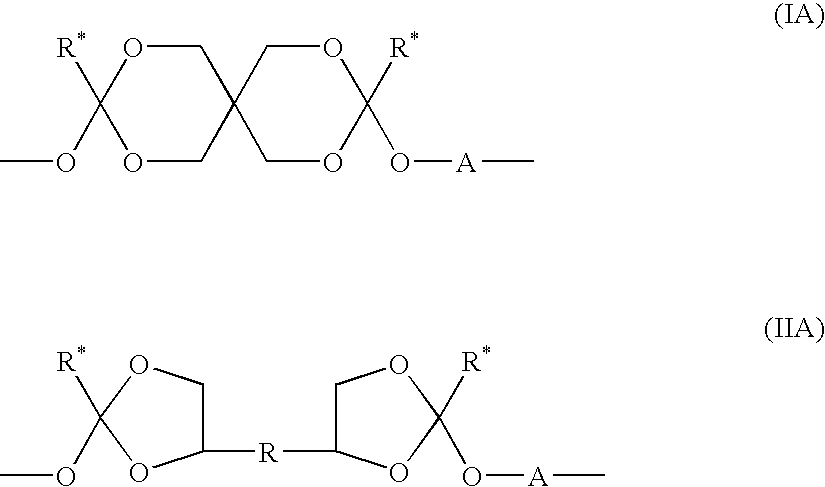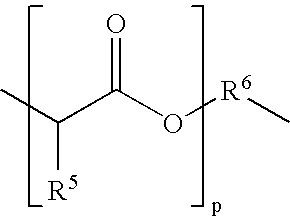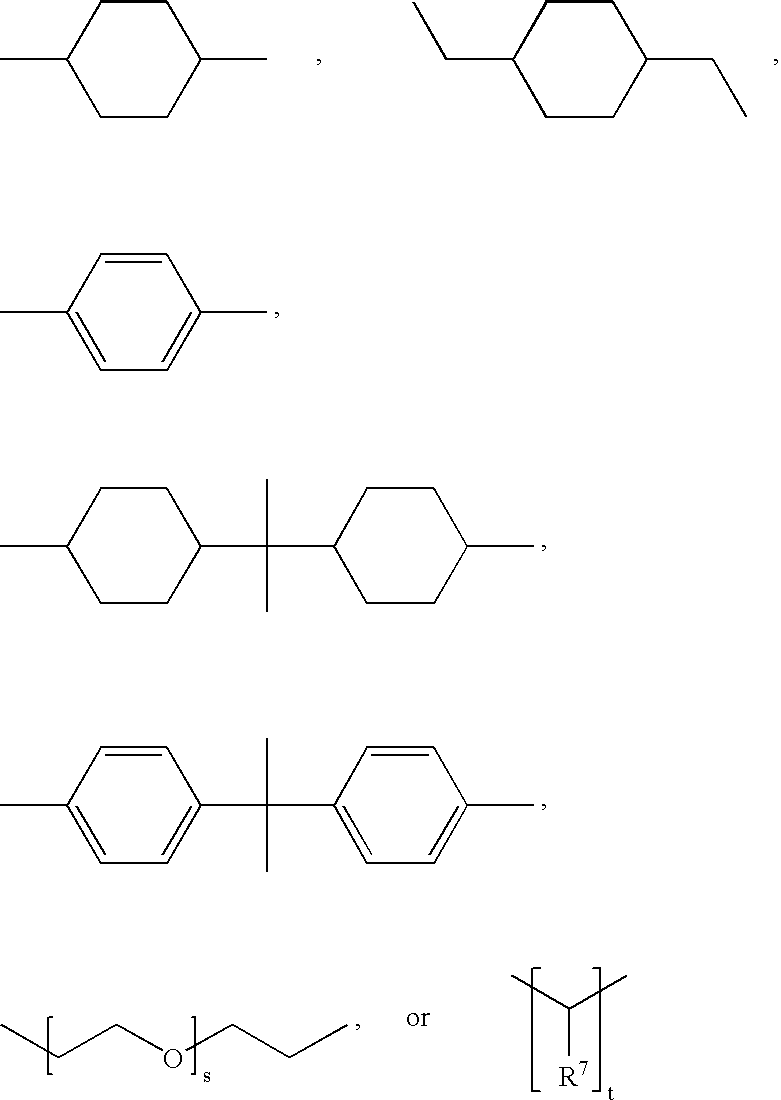Block copolymers based on poly(ortho esters) containing amine groups
a technology of ortho esters and copolymers, which is applied in the field of block copolymers based on poly (ortho esters) containing amine groups, can solve the problems of limiting the amount of water that can penetrate the polymer, requiring elevated temperature and reduced pressure, and requiring relatively long reaction tim
- Summary
- Abstract
- Description
- Claims
- Application Information
AI Technical Summary
Problems solved by technology
Method used
Image
Examples
example 1
Preparation of a Diblock Copolymer of Formula X
[0179]Under anhydrous conditions, 20 g (10 mmol) PEG 2000 mono-methyl ether (MPEG 2000) and 21.23 g (100 mmol) DETOSU are weighed into a 250 mL flask and dissolved in 40 mL THF. A solution of p-toluenesulfonic acid in THF (0.05 mL, 20 mg / mL) is added to the MPEG 2000 / DETOSU solution to initiate the reaction between the MPEG 2000 and the DETOSU, and the reaction mixture is stirred for about 20 minutes. CDM (13.20 g, 91.5 mmol), 0.375 g (2.5 mmol) MDEA, and 0.213 g (1 mmol) TEG-mGL in 40 mL tetrahydrofuran are added to the flask, followed by another 0.05 mL of the p-toluenesulfonic acid solution. The reaction mixture is stirred for about 30 minutes, and then added dropwise to about 1 L of hexane with vigorous stirring, precipitating the diblock copolymer product, which is separated by filtration and dried in a vacuum oven.
example 2
Preparation of a Triblock Copolymer of Formula Z
[0180]Under anhydrous conditions, 15 g (15 mmol) PEG 1000 and 21.23 g (100 mmol) DETOSU are weighed into a 250 mL flask and dissolved in 40 mL THF. A solution of p-toluenesulfonic acid in THF (0.05 mL, 20 mg / mL) is added to the PEG 1000 / DETOSU solution to initiate the reaction between the PEG 1000 and the DETOSU, and the reaction mixture is stirred for about 20 minutes. CDM (11.52 g, 79.9 mmol), 0.750 g (5.0 mmol) MDEA, and 0.226 g (0.85 nmmol) TEG-mGL in 40 mL tetrahydrofuran are added to the flask, followed by another 0.05 mL of the p-toluenesulfonic acid solution. The reaction mixture is stirred for about 30 minutes, and then added dropwise to about 1 L of hexane with vigorous stirring, precipitating the triblock copolymer product, which is separated by filtration and dried in a vacuum oven, giving a triblock POE-PEG-POE copolymer.
[0181]Other copolymers of formula X, Y, and Z are similarly prepared.
PUM
| Property | Measurement | Unit |
|---|---|---|
| mol % | aaaaa | aaaaa |
| diameter | aaaaa | aaaaa |
| pH | aaaaa | aaaaa |
Abstract
Description
Claims
Application Information
 Login to View More
Login to View More - R&D
- Intellectual Property
- Life Sciences
- Materials
- Tech Scout
- Unparalleled Data Quality
- Higher Quality Content
- 60% Fewer Hallucinations
Browse by: Latest US Patents, China's latest patents, Technical Efficacy Thesaurus, Application Domain, Technology Topic, Popular Technical Reports.
© 2025 PatSnap. All rights reserved.Legal|Privacy policy|Modern Slavery Act Transparency Statement|Sitemap|About US| Contact US: help@patsnap.com



